On 10 May 1860, German chemists, Robert Bunsen and Gustav Robert Kirchoff announced their the discovery of the new elements caesium and rubidium.
The following year, Bunsen published some further results of his work on compounds of these new elements. His paper (the original of which was in German) was summarized in the American Journal of Science (Nov 1861) labelled Caesium and Rubidium.
Bunsen gave an account of how he managed to identify these as new elements by spectrum analysis. Though originally found in tiny amounts in the mineral waters of Dürkheim, he also found these new elements in lepidolite minerals. Thus he more easily obtained small quantities of compounds sufficient for laboratory testing.
The article also explains how the names for Caesium and Rubidium were chosen.
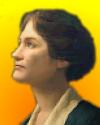
On 10 May 1900, Cecilia Payne-Gaposchkin was born, an English-born American astronomer who was the first to apply laws of atomic physics to the study of the temperature and density of stellar bodies, and the first to conclude that hydrogen and helium are the two most common elements in the universe. She had difficulty persuading her superiors to take her work seriously. Today's book pick is: , by , by this great woman astronomer.
The book was editted by her daughter, Katherine Haramundanis, who is most able to properly interpret and augment with her personal recollections. This book will interest both astronomers and those studying the advancement of the position and status of women in society.
It is available from Amazon, typically about (As of earlier time of writing - subject to change.)
| no image | [The] weakness of biological balance studies has aptly been illustrated by comparison with the working of a slot machine. A penny brings forth one package of chewing gum; two pennies bring forth two. Interpreted according to the reasoning of balance physiology, the first observation is an indication of the conversion of copper into gum; the second constitutes proof. [Co-author with David Rittenberg (1906-70).] |
 | No idea should be suppressed. … And it applies to ideas that look like nonsense. We must not forget that some of the best ideas seemed like nonsense at first. The truth will prevail in the end. Nonsense will fall of its own weight, by a sort of intellectual law of gravitation. If we bat it about, we shall only keep an error in the air a little longer. And a new truth will go into orbit. |
 | It is characteristic of science that the full explanations are often seized in their essence by the percipient scientist long in advance of any possible proof. |
| Before you look at today's web page, see if you can answer some of these questions about the events that happened on this day. Some of the names are very familiar. Others will likely stump you. Tickle your curiosity with these questions, then check your answers on today's web page. | |
| Births | |
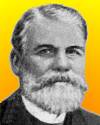 | François-Marie Raoult, born 10 May 1830, was a French chemist who formulated a law on solutions (called Raoult’s law) which made it possible to determine an important property of the molecules of dissolved substances. What is this property? |
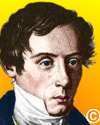 | A French physicist, born on 10 May 1788, pioneered in optics and did much to establish the wave theory of light. His name is also well-known for the complex, ridged lenses used to project the light from lighthouses, which are named after him. What is the name of this scientist? |
| Deaths | |
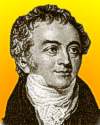 | An interesting English physicist (1773-1829) died on this day. He reinforced the wave theory of light with his study of interference of of light. He also is known for his work with elasticity, A property of materials now uses his name with the word modulus. What is the name of this scientist? |
 | Leonhard Fuchs was a German botanist (1501-1566) who wrote books describing numerous plant species. Because of the significance of his work, later a shrub named after him. This shrub’s flowers have a particular color known by the same name, which has become part of our language, thus eternally memorializing this scientist. Can you name this shrub or flower? |
| Events | |
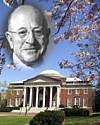 | On 10 May of a certain year, the first planetarium owned by a U.S. university, opened to the public. John Motley Morehead made the gift to the University of Chapel Hill, North Carolina. In which decade was the Morehead Planetarium opened? |
 | On 10 May 1860, the discovery of caesium, a new element, was announced by Robert Bunsen and Gustav Robert Kirchoff at the Berlin Academy of Scientists. They isolated it to identify what element was producing certain lines in a spectrum analysis. The element was named for the color of these lines. What was the color of caesium’s most characteristic spectral lines? |
 | In 1852, the theory of valence was announced by an English chemist. The valence explains that any atom can combine with a certain, limited number of other atoms. This is a fundamental consideration for chemical structure. It is known simply as the “theory of valence”, rather than “so-and-so’s theory”, hence his name is not heard much, even though his work earned him a knighthood. What is the name of the scientist that originated the theory of valence? |
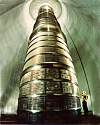 | On 17 May 1979, the highest voltage ever generated, was produced by the National Electrostatics Corporation, Oak Ridge, Tenn. To the nearest power of ten, what was this voltage? |
Fast answers for the previous newsletter for May 9: the Earl of Carnarvon • the speed of light • When gases combine their relative volumes bear a simple numerical relation to each other (e.g., 1:1, 2:1) and to their gaseous product (under constant pressure and temperature). • eyes • The Hindenburg Zeppelin • stethoscope.
 If you enjoy this newsletter, the website, or wish to offer encouragement or ideas, please send feedback by using your mail reader Reply button.
If you enjoy this newsletter, the website, or wish to offer encouragement or ideas, please send feedback by using your mail reader Reply button. Your click on a Facebook, StumbleUpon, or other social button on the site webpages is also a welcome sign of appreciation. Thank you for using them.
© This newsletter is copyright 2020 by todayinsci.com. Please respect the Webmaster's wishes and do not put copies online of the Newsletter — or any Today in Science History webpage. (If you already have done so, please remove them. Thank you.) Offline use in education is encouraged such as a printout on a bulletin board, or projected for classroom viewing. Online, descriptive links to our pages are welcomed, as these will provide a reader with the most recent revisions, additions and/or corrections of a webpage. For any other copyright questions, please contact the Webmaster by using your mail reader Reply button.
--
If you do not want to receive any more newsletters, Unsubscribe
To update your preferences and to unsubscribe visit this link
Executive Real Estate Business Class
-
"It was like a man with wings. It wasn't like anything you'd see on TV or in a monster movie." ...
About the publisher
Search This Blog
Blog Archive
-
▼
2021
(585)
-
▼
May
(62)
- Tonight: Back-to-Back Premieres
- On This Day for May 31 - Adolf Eichmann hanged, Cl...
- Newsletter for Monday 31 May.
- On This Day for May 30 - Joan of Arc burned at the...
- TONIGHT at 8/7c: The Tulsa Race Massacre Revealed
- Newsletter for Sunday 30 May.
- Bundle Up For The Summer!
- On This Day for May 29 - Mount Everest summit reac...
- Newsletter for Saturday 29 May.
- On This Day for May 28 - Amnesty International fou...
- Newsletter for Friday 28 May.
- On This Day for May 27 - Founding of St. Petersbur...
- Newsletter for Thursday 27 May.
- On This Day for May 26 - Martin Luther declared a ...
- Newsletter for Wednesday 26 May.
- On This Day for May 25 - U.S. Constitutional Conve...
- Newsletter for Tuesday 25 May.
- Behind Every Empire There’s a Titan
- On This Day for May 24 - Opening of the Brooklyn B...
- On This Day for May 23 - Tibet annexed by China, C...
- Newsletter for Sunday 23 May.
- The Tulsa Race Massacre, 100 Years Later
- On This Day for May 22 - Roman Emperor Constantine...
- Newsletter for Saturday 22 May.
- On This Day for May 21 - First nonstop solo transa...
- Newsletter for Friday 21 May.
- On This Day for May 20 - U.S. Homestead Act signed...
- Newsletter for Thursday 20 May.
- On This Day for May 19 - Ringling Bros. Circus for...
- Newsletter for Wednesday 19 May.
- Learning This Fun Doesn't Need A Summer Break
- On This Day for May 18 - Eruption of Mount St. Hel...
- Newsletter for Tuesday 18 May.
- On This Day for May 17 - School segregation outlaw...
- Newsletter for Monday 17 May.
- Follow the trail of 400 facts!
- On This Day for May 16 - Warsaw Ghetto Uprising su...
- Newsletter for Sunday 16 May.
- On This Day for May 15 - Edith Cresson appointed F...
- Newsletter for Saturday 15 May.
- On This Day for May 14 - Declaration of Israel's s...
- Newsletter for Friday 14 May.
- On This Day for May 13 - U.S. declaration of war o...
- Newsletter for Thursday 13 May.
- Ridiculous History You Want To Know About!
- On This Day for May 12 - First flight over the Nor...
- Newsletter for Wednesday 12 May.
- On This Day for May 11 - “New Rome” established by...
- Newsletter for Tuesday 11 May.
- On This Day for May 10 - Nelson Mandela inaugurate...
- Newsletter for Monday 10 May.
- On This Day for May 9 - Fourth and final voyage of...
- On This Day for May 7 - Theatre Royal opened, Pyot...
- On This Day for May 5 - Mexican victory in the Bat...
- On This Day for May 4 - Four students shot at Kent...
- On This Day for May 3 - Margaret Thatcher elected ...
- Newsletter for Monday 3 May.
- TONIGHT: The Bin Laden Raid, Revealed
- On This Day for May 2 - Lou Gehrig's 2,130-game st...
- Newsletter for Sunday 2 May.
- On This Day for May 1 - May Day founded, Arthur We...
- Newsletter for Saturday 1 May.
-
▼
May
(62)
-
Blogroll
-
About
HistoryFact










0 comments:
Post a Comment